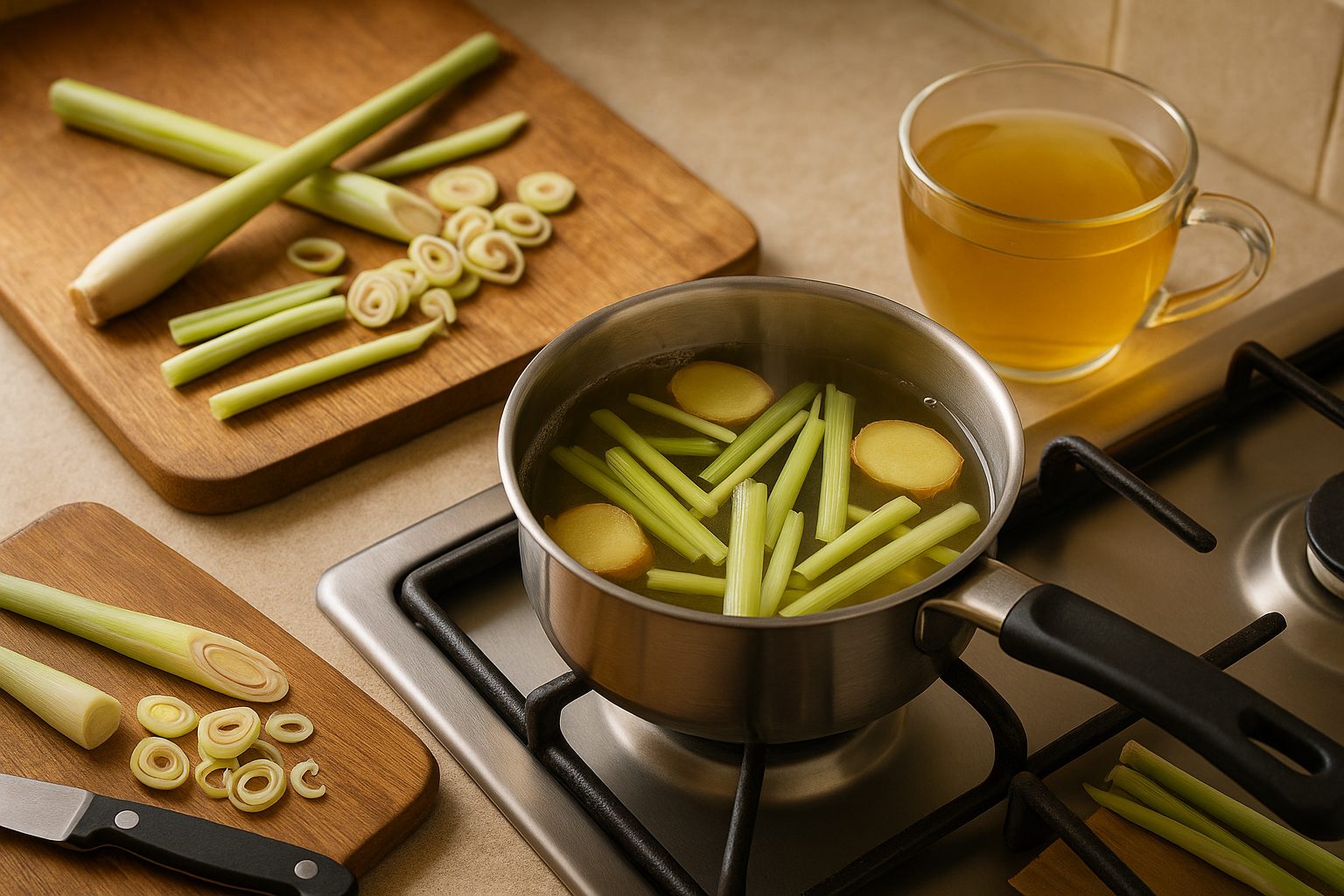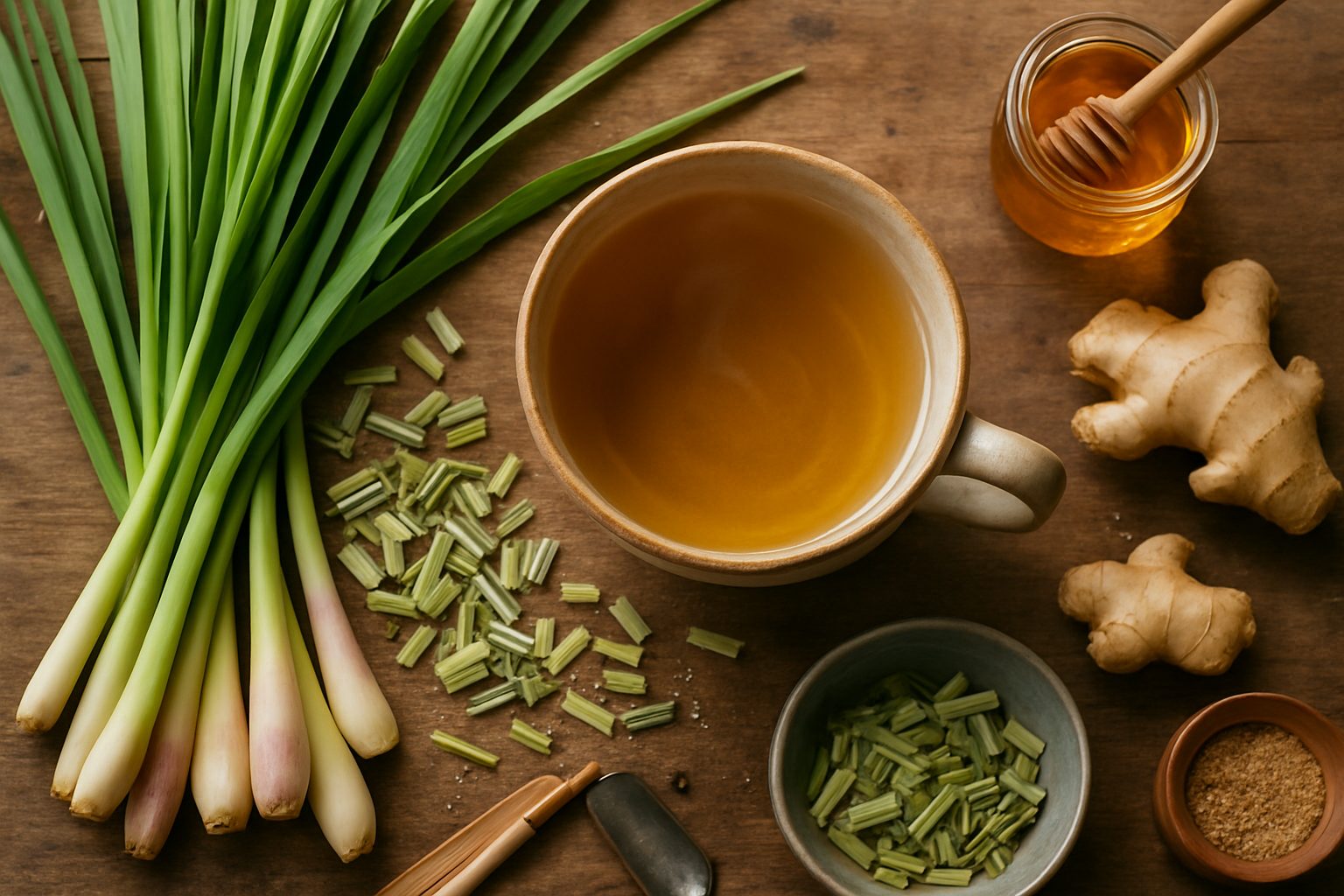Introduction
Lemongrass tea benefits are creating a buzz around this fragrant herbal infusion, prized not only for its refreshing citrusy flavor but also for its reputation as a wellness staple in both traditional and modern settings. More people are swapping their usual brews for lemongrass tea, hoping to tap into its soothing properties and time-honored remedies. In this article, we’ll explore the top health perks of sipping lemongrass tea, share straightforward ways to brew the perfect cup at home, and cover important health considerations to keep in mind before making it your go-to daily drink.
What Is Lemongrass Tea?

Lemongrass is a tall, fragrant grass native to tropical regions of Asia and Africa, most famously grown in countries like India, Thailand, Vietnam, and Sri Lanka. Its lemony aroma and citrus flavor make it a staple in many Asian kitchens, where it’s used to add brightness to dishes and drinks.
Lemongrass tea is a simple herbal infusion made by steeping fresh or dried lemongrass stalks and leaves in hot water. If you have access to fresh lemongrass, just chop the tender inner stalk and let it simmer for a few minutes; alternatively, dried lemongrass can be found in most health food stores and used in the same way.
The resulting tea is light, crisp, and slightly sweet with gentle citrus notes, often described as soothing and refreshing without being overpowering. In Thailand and Vietnam, lemongrass tea is enjoyed both hot and cold, sometimes sweetened with honey or paired with ginger for an extra kick.
Beyond its delicious taste, lemongrass tea plays a significant role in traditional medicine, thanks to its reputation for aiding digestion and calming nerves. Whether sipped after a meal or served over ice on a hot day, lemongrass tea offers a touch of global flavor and comfort in every cup.
Top Health Benefits of Lemongrass Tea
Lemongrass tea has long been valued in both traditional medicine and modern wellness circles for its impressive range of health benefits. Rich in antioxidants like chlorogenic acid and isoorientin, lemongrass tea helps combat damaging free radicals, supporting cell health and boosting overall immunity.
Research suggests these antioxidants may also contribute to slowing the aging process and lowering your risk of chronic diseases. Its natural antimicrobial properties, traditionally used to fight infections, have been shown in studies to inhibit the growth of bacteria and fungi, making it a helpful support for your body’s natural defenses.
Drinking lemongrass tea is also famous for easing digestive woes—people often sip it to relieve bloating, indigestion, or nausea thanks to its soothing, anti-inflammatory effects on the gut.
For those concerned about heart health, early research indicates lemongrass tea may help regulate blood pressure and lower cholesterol levels, making it a great addition to a balanced lifestyle; one small study found people drinking lemongrass tea daily saw reduced systolic blood pressure.
Its metabolism-boosting and diuretic properties may also aid in weight management, helping reduce water retention and supporting a healthy digestive system.
By reducing inflammation throughout the body, lemongrass can contribute to less joint pain and discomfort—useful for those with arthritis or other inflammatory concerns.
Together, these benefits not only help your body fend off illness but also promote better energy, lighter digestion, and improved overall well-being.
While lemongrass tea is safe for most people and offers exciting natural benefits, it’s important to note that ongoing scientific research is still uncovering the full extent of its effects, so it’s best enjoyed as part of a holistic approach to health.
How to Brew Lemongrass Tea at Home

Brewing lemongrass tea at home is simple, refreshing, and easy to tailor to your taste. Start by rinsing and slicing two fresh lemongrass stalks into thin rings. If you’re using dried lemongrass, use about two tablespoons per cup of water.
Place the lemongrass in a saucepan and add two cups of water. Bring it to a gentle boil, then simmer for five to ten minutes—the longer it steeps, the stronger the flavor will be. Strain the tea into cups, discarding the solids.
For an extra flavor boost, add a few slices of fresh ginger during simmering or squeeze in some fresh lemon juice before serving for a bright, citrusy note. Stir in honey or your favorite sweetener to taste.
If you want to make a larger batch, simply double or triple the ingredients. Store the brewed tea in the fridge for up to three days.
Serving Suggestions
To enjoy iced lemongrass tea, let your brew cool to room temperature, then chill it in the refrigerator. Serve over ice with lemon slices or a sprig of mint for a refreshing summer drink—a perfect option for gatherings.
Flavor Variations
- Add a cinnamon stick during simmering for warmth.
- Include a few fresh mint leaves for a cool twist.
Whether you’re craving a warming cup or a cool, caffeine-free refresher, homemade lemongrass tea is easy to customize and always soothing.
Popular Variations and Recipes
Lemongrass tea is wonderfully versatile, and there are plenty of delicious ways to enjoy it beyond the classic cup. For a refreshing start, try ginger-lemongrass tea: simply simmer a few stalks of chopped lemongrass and sliced fresh ginger in water for 10 minutes, then strain and serve hot or over ice.
If you prefer a creamy twist, make lemongrass tea with milk by preparing the base tea, then stirring in a splash of warm milk or a dairy alternative, plus a drizzle of honey for extra richness—this version is especially soothing in the evening.
Lemongrass also pairs beautifully with mint, lemon slices, or even a stick of cinnamon; add these straight to the pot for subtle layers of flavor. For a sweeter experience, mix in brown sugar or agave syrup, or keep things lighter by enjoying it unsweetened with a wedge of lemon.
Serve your tea hot in colder months or iced during summer—just chill the brewed tea and pour over ice with a sprig of mint for a cooling treat. Whether you like it bold, mellow, sweet, or spiced, lemongrass tea adapts easily to any taste and occasion.
Precautions and Possible Side Effects
Before trying any new supplement or treatment, it’s important to take certain precautions, especially if you belong to specific groups. Pregnant or breastfeeding individuals, people with chronic medical conditions such as diabetes, liver or kidney disorders, and those taking regular medication should be particularly careful, as some ingredients can interact with medications or affect existing conditions.
Allergic reactions are possible, especially if you have a history of sensitivity to similar substances—always check the ingredients list, and do a small patch test or start with a lower dose if unsure.
Common side effects might include mild digestive upset, headaches, dizziness, or skin irritation, depending on the product. Anything more severe, such as difficulty breathing, swelling, or persistent rashes, should be taken seriously and prompt immediate medical attention.
It’s wise to avoid combining multiple new supplements at once, so you can monitor how your body reacts to each.
When in doubt, consult your healthcare provider or pharmacist—they can review your medical history and let you know if the supplement or treatment is safe for you. Taking these extra steps can help prevent complications and ensure your wellness journey is both safe and effective.
Conclusion
Lemongrass tea offers a refreshing way to support wellness, with benefits like aiding digestion, calming the mind, and providing antioxidants that fight inflammation. Adding a cup to your daily routine can be a simple upgrade—whether you enjoy it hot after meals or chilled as a summer drink.
Remember, everyone’s health needs are unique. To make the most of lemongrass tea’s benefits and ensure it suits your individual circumstances, consider consulting a healthcare professional or nutritionist for personalized advice.
Enjoying this aromatic tea is a small but meaningful step toward a healthier lifestyle.
